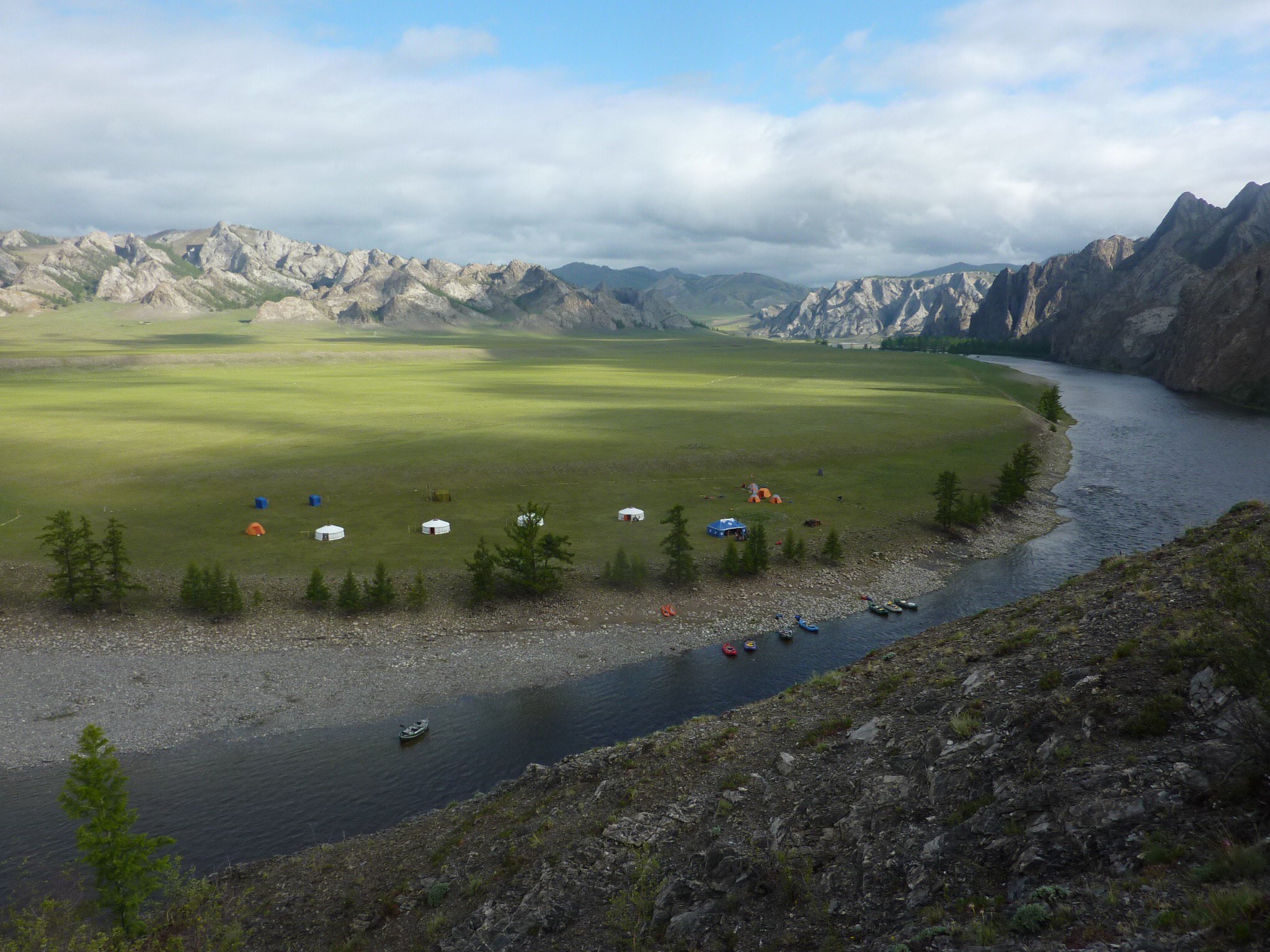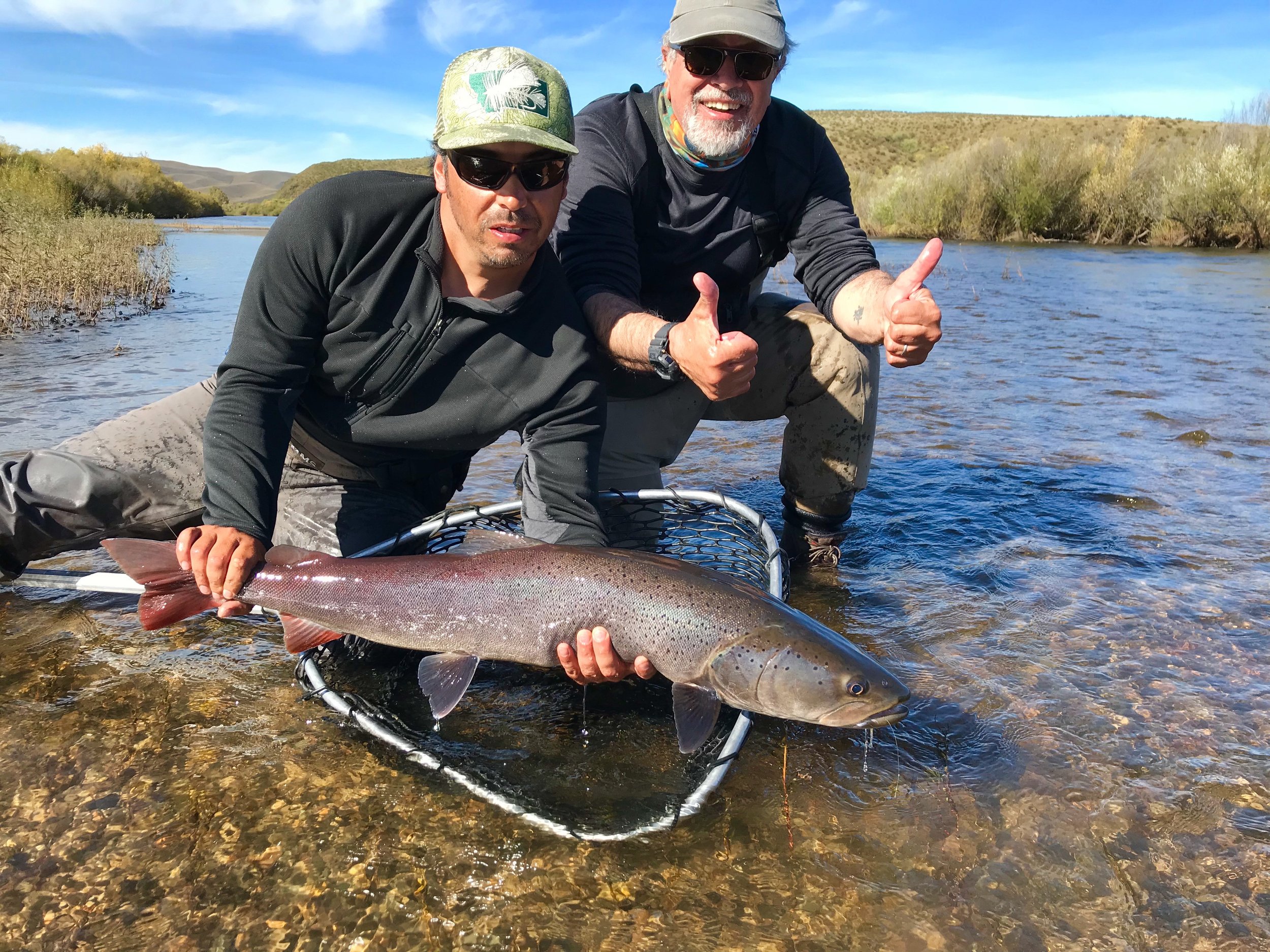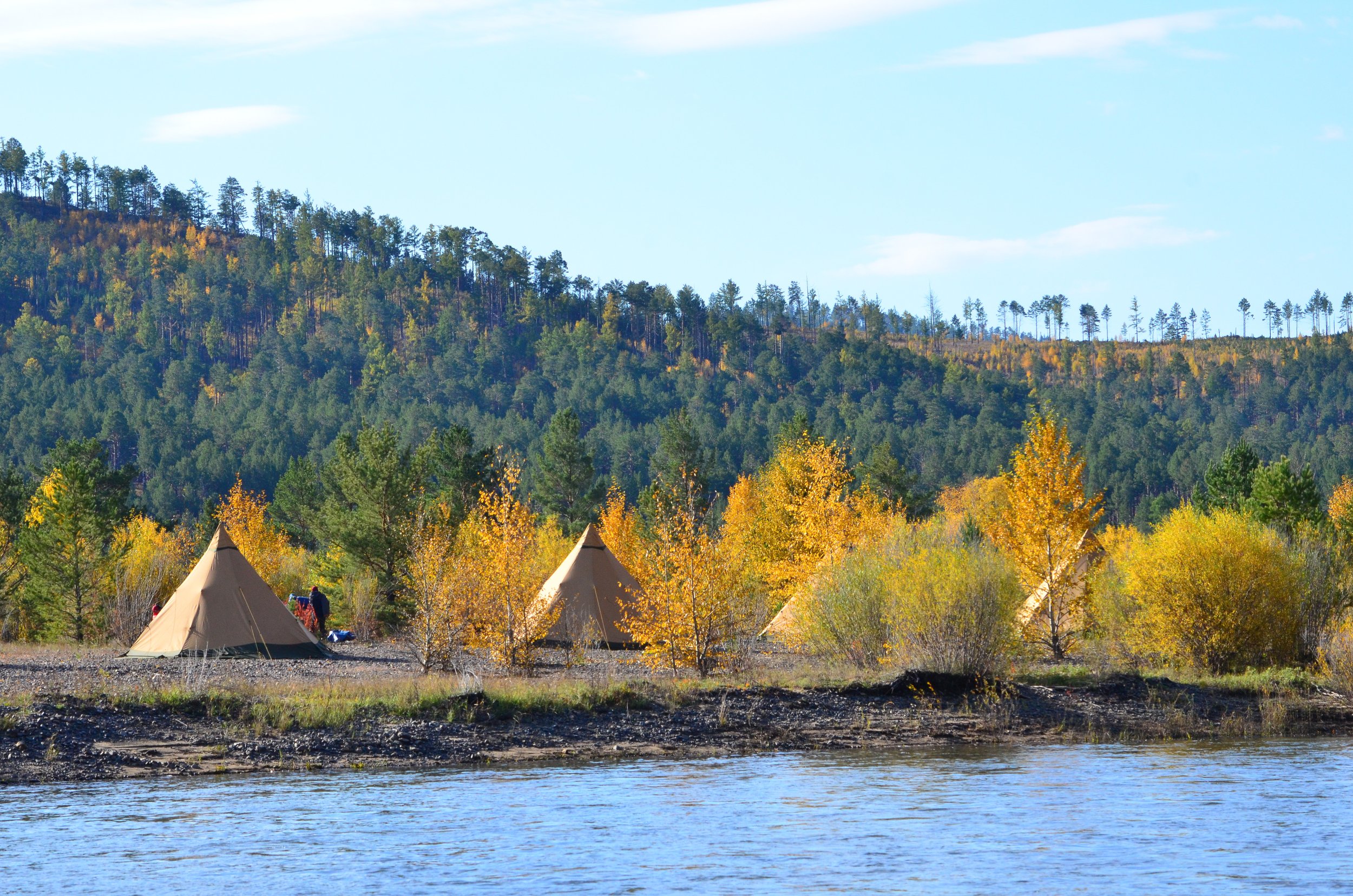Introduction
FLY-FISHING IN ICELAND
Iceland offers some of the best sea-trout fishing in the world, set in historic and picturesque locations that provide anglers with an unforgettable experience. Renowned for its dramatic beauty and unique landscapes, much of the region's terrain has been shaped by volcanic activity over millennia.
For thousands of years, native sea trout have thrived in these rivers, surviving countless volcanic eruptions and lava flows. These resilient fish are a testament to nature’s adaptability, returning year after year to the pristine rivers of the Skaftafellssýsla region.
For decades, these rivers were managed exclusively by local fishing clubs and closed to outside anglers. However, this has recently changed thanks to a new lease agreement between Fish Partner and the landowners. Now, the finest sea-trout fisheries in the region are open to international anglers, offering the chance to fish for these magnificent native sea trout in a breathtaking and unparalleled landscape.
BATTLE HILL LODGE
“"The ultimate native sea-trout fishery, now available on the open market for the first time ever."
The Battle Hill Lodge is a beautifully renovated farmhouse located on a historic farm in southeast Iceland. Blending a clean, modern style with contemporary amenities, the lodge accommodates up to 10 guests in four twin rooms and two single rooms, spread across two floors. It features two and a half bathrooms for added convenience. Situated roughly 1 km from Ring Road No. 1, the lodge is easily accessible yet wonderfully secluded. Here, you’ll experience unparalleled tranquility, surrounded by breathtaking views of a lava field and the Vatnajökull Glacier.
Just outside your front door lies the Bruna Hraun lava field, a protected area that is part of a greater national park and one of three UNESCO World Heritage Sites in Iceland. Beyond that, you’ll be greeted by the sight of Vatnajökull, Europe’s largest glacier, with the towering Lómagnúpur cliff standing dramatically between the lava field and the glacier.
The surrounding area offers endless opportunities to explore the unspoiled beauty of the Icelandic highlands, with majestic mountains, thundering waterfalls, iconic canyons, and some of the country’s newest lava fields waiting to be discovered.
THE FISHERY HAS IT ALL!
All three rivers fished from Battle Hill Lodge share a common feature: they are tributaries of the mighty glacial river Skaftá. These rivers flow through a volcanic landscape, offering a unique fishing experience amidst lava fields and black sands, with glaciers providing a stunning backdrop. This diverse terrain allows anglers to fish with double-handed rods and swing flies or to nymph through exceptionally scenic pools with a single-handed rod.
Seasons
Fishing from Battle Hill Lodge is available during two seasons: fall and spring.
Fall Season:
Runs from mid-August to October 20th.
Sea trout begin their migration in late July and continue running until the end of the season.
Spring Season:
Runs from mid-April to mid-May.
During this time, sea trout that have overwintered in the rivers remain in excellent condition. Unlike salmon kelts, sea trout continue feeding in the rivers.
Spring fishing is focused on the Vatnamót and Geirlandsá rivers.
WE MAINLY FISH THREE RIVERS
The Vatnamót River: Vatnamót means “River Junction” in Icelandic. The Vatnamót fishery has long been regarded as one of the best in Iceland for sea trout. Fishing at Vatnamót primarily consists of sea trout, renowned for their impressive size. Fish weighing 20 pounds or more are not uncommon, and more often than not, the largest sea trout caught each season come from the Vatnamót fishery. In addition to sea trout, anglers can find healthy populations of Arctic char and salmon.
All the sea trout that run in the tributaries of the mighty Skaftá stop at Vatnamót before continuing to their home rivers. The fishery offers a large number of pools and fishing spots, with a bottom primarily composed of sand that changes constantly. As a result, the fish tend to move frequently. Anglers visiting Vatnamót must be prepared to search for likely pools and runs.
The area is mostly accessible, with the lower sections allowing anglers to drive right up to the riverbank and fish from there. In the upper sections, wading is required. While wading can be challenging, it is also highly rewarding. The experience has been likened to flats fishing in saltwater, as the shallow waters reveal new pockets daily, offering an exciting and dynamic fishing environment.
The Fossálar River: This river is exceptionally beautiful, with diverse pools that captivate anglers and nature lovers alike. Part of the Fossálar River is included on UNESCO's Natural Heritage list, highlighting the stunning beauty of the landscape in this area. Fossálar is renowned for its breathtaking scenery, featuring a mesmerizing cacophony of cascades—some gently falling, while others tumble and babble energetically down massive cliffs. The landscape resembles a painting, leaving onlookers enchanted.
Situated amidst a vast lava field, the river flows through numerous smaller waterfalls. This lava field was created during the catastrophic Laki super-eruption of 1783, considered one of the deadliest eruptions in history.
Fossálar is famous for its sea-run brown trout, known for their impressive size and numbers. The river is a paradise for anglers, offering roughly 15 kilometers (9.5 miles) of diverse pools and ever-changing landscapes. However, Fossálar is a challenging river to read, making it particularly exciting for experienced anglers and guides who relish its complexities. The diversity of this river is truly remarkable, offering a dynamic and rewarding fishing experience.
The Geirlandsa River: Believed to be the main spawning tributary of the Skaftá River, Geirlandsá is often referred to as the most beautiful sea-trout river in Iceland. The river flows through the valley of Síða, just east of the hamlet of Kirkjubæjarklaustur. Its source is located in Geirlandsbotnar, approximately 500 meters above sea level. Spanning roughly 22 kilometers (14 miles), the river is home to two spectacular waterfalls: Fagrifoss and Hagafoss. The latter marks the furthest point upriver that anadromous species can reach.
From Hagafoss, the river winds several miles through dramatic canyons, offering endless pools and runs perfect for fly fishing. To reach Hagafoss, anglers must hike nearly a mile up the canyon, a trek recommended only for those in good physical condition. Those who make the journey are rewarded with some of the most breathtaking scenery found anywhere.
Below the canyon section, the river transitions into a meandering flow through gravel banks before merging with the tributary river Stjórn. At this confluence, the river changes character; the bottom shifts from gravel to sand, and the river’s name becomes Breiðbalakvísl.
Geirlandsá is renowned for its large sea-run brown trout, both in size and number. It is also home to a respectable population of Atlantic salmon. Anglers can fish the river effectively using either single-handed or two-handed rods, depending on personal preference and conditions.
TACKLE AND GEAR
The following recommendations are the result of decades of combined sea trout fishing experience.
Rods: The tributaries and Skaftá itself are excellent for fishing both single-handed and double-handed rods. A Spey rod allows you to cast in some parts with less effort. Mending and controlling the line is also much easier with a Spey rod. We recommend you 7- to 9-weight from 12-14 ft. Single-handed rods from weight class 6 to 8 and up to 10 feet long are very effective, especially on the smaller pools. A slightly longer rod has the advantage for technical nymph fishing and also for mending while swinging tube flies or skating dry flies.
Reels: Be sure to choose a quality reel with a powerful and adjustable drag. Your reels and spare spools should have enough capacity to hold at least 100 yards of 20 pound backing.
Lines: In order to be well prepared, you should carry at least 3 different lines with you to defy fluctuating water levels and wind. Floating lines are most useful during low- water conditions, technical nymphing and while fishing the smaller pools. Integrated sink-tip lines also work great, while intermediate lines are also effective in some conditions. For double-handed rods we are using shooting heads from floating to fast sinking . Most floating and intermediate shooting heads can also be used with different tips, so you can target different depths. A Skagit or a Scandy line can be very useful while fishing heavy sink-tips, bigger flies and to brave the wind. Use 350- to 600- grain heads depending on your rod.
Leaders: Sea run brown trout in the Skaftá system are not particularly leader shy. Your spools of monofilament or fluorocarbon should include 12-20 pounds. We recommend you to have knotless tapered leaders from 9-12ft with 01x tippet. Check the knots on your leader after every caught fish.
Flies: Make sure to bring a good selection of flies. However some great fly patterns and back-up tackle will be available for purchase at the Battle Hill lodge. Sea run browns behave differently than their resident brothers and sisters. The only constant in their taste seems to be the color black and white. One day the trout may be completely obsessed with small salmon flies, and the next day they may be more responsive to rubber legged nymphs. Historically, most fish in the area are caught with the black ghost streamer and rubber leg nymphs, perhaps because these are the flies that are commonly used. In low water conditions and the smaller pools most fish are caught with smaller tube flies, wet flies, nymphs and dry flies. We recommend having a good selection of different patterns with you. The flies we fish are based on sunlight, water level and your guide's recommendation. Catch-and-release is mandatory. Use strong quality hooks only.
THE PACKAGE
Remember that Andes Journeys services are completely free. When you book a trip with us, you pay the same rate as if booking directly with the lodge or outfitter.
Six-day packages, each trip starts on a half-day and ends on a half-day.
RATES
$8,300 - $9,500 USD per person, depending on the fishing week
Included in the package is:
Transportation from/to the lodge from Reykjavik and back.
Fishing license for private waters
Accommodation (private single and double rooms with shared bathrooms)
Full board, non-alcoholic beverages (beer and wine are available for purchase)
Guide (1 guide per two anglers)
Not Included:
Airfare to and from Reykjavik, Iceland.
Accommodations and transportation in Reykjavik
Equipment (rods, waders, and flies)
Wine and alcoholic beverages
Gratuities.
BASIC ITINERARY
Arrival in Iceland:
Arrange a shuttle from the airport to your hotel in Reykjavík for the first night.
Day 1: Half day of fishing
Pick-up in Reykjavík at 10:00 AM.
Arrive at the lodge around 2:00 PM.
Enjoy a light lunch before heading out to fish.
Dinner served between 8:00 and 9:00 PM (depending on daylight).
Days 2–6: Five full days of fishing
Breakfast at 8:00 AM.
Spend the day fishing, with lunch served on the riverbank.
Return to the lodge for dinner between 8:00 and 9:00 PM.
Day 7: Half day of fishing
Breakfast at 8:00 AM.
Fish during the morning.
Lunch at 12:00 PM, followed by packing.
Depart for Reykjavík around 2:00 PM.
Departure from Iceland:
After leaving the lodge, we recommend staying overnight in Reykjavík and catching your flight the following morning.
Anglers will rotate equally between the waters during the week.
DATES
Apr 15 – 21
Apr 21 – 27
Apr 27 – May 3
May 3 – 9
May 9 – 15
Aug 15 – 21
Aug 21 – 27
Aug 27 – Sep 2
Sep 2 – 8
Sep 8 -14
Sep 14 – 20
Sep 20 – 26
Sep 26 – Oct 2
Oct 2 – 8
Oct 8 – 14
Oct 14 – 21


























































